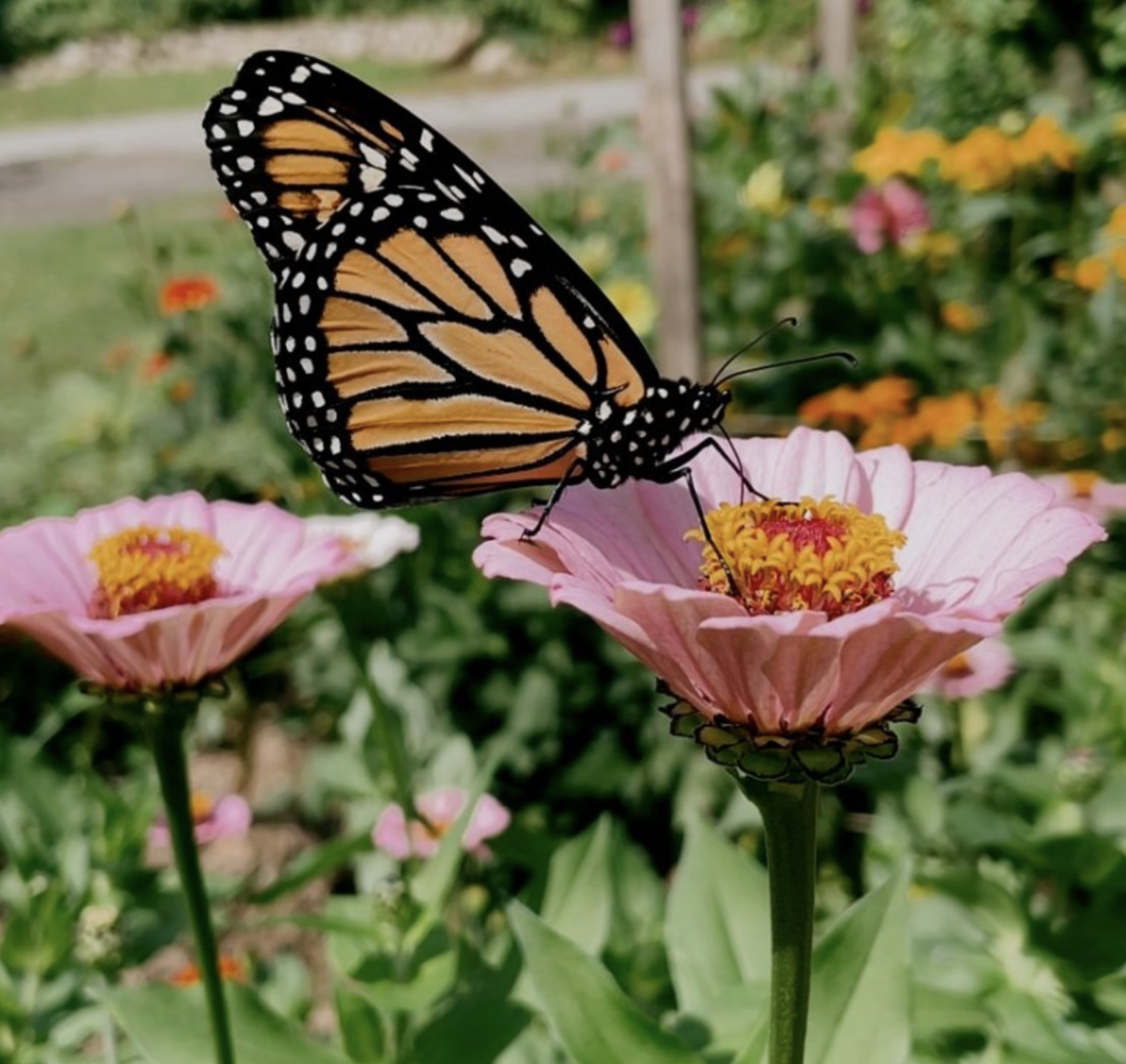5 Pollinator-Friendly Flowers to Plant in Your Connecticut Garden
As a grower here in Connecticut, I've come to understand how deeply intertwined the health of our gardens is with the health of the pollinators that visit them. The bees, butterflies, and other pollinators aren’t just visitors—they’re essential partners in the dance of growth. Planting flowers that support these creatures is one way we can foster a thriving garden and a healthier environment. Here are five pollinator-friendly flowers that not only add beauty to your garden but also invite nature’s helpers in.
A butterfly visiting our garden at Bloom Harvest Flower Farm in Southeastern, Connecticut
Calendula
Calendula’s bright, sunny blooms extend from early spring well into fall (I was still harvesting in early December this year—before the snow took them out!). This hardy flower is a reliable nectar source for bees and butterflies. It thrives in Connecticut's cooler growing season and its long bloom period makes it a steady food source. Calendula’s flowers also look great in bouquets, and its edible petals can be tossed into salads or brewed in teas.
Nasturtium
Nasturtium adds a splash of color with bold reds, oranges, and yellows, making it perfect for brightening up any garden bed. It’s especially great for growing along vegetable rows where bees will visit while you enjoy its edible leaves. Nasturtiums are low-maintenance and thrive in poorer soil, which makes them a perfect, no-fuss plant for Connecticut gardens. Their peppery leaves add a zesty note to salads, and I love making nasturtium butter or Nasturtium Lemon Balm Pesto.
NASTURTIUM HERB BUTTER made by Rachel at Bloom Harvest Farm
Borage
Borage stands out with its star-shaped blue flowers that the bees absolutely love them. Borage is a strong magnet for honeybees and other pollinators, making it a must-have. It grows easily in full sun with well-drained soil, which works well for our climate here in Connecticut. Beyond attracting pollinators, borage’s edible flowers are great for summer cocktails, and I love harvesting them to freeze in ice cubes for a little floral touch in my drinks.
Sage
Sage is more than just a flavorful herb for your kitchen—it’s also a fantastic pollinator plant. The vibrant purple or blue blooms that appear in late spring and summer are a favorite of bees and butterflies. Sage thrives in full sun and well-drained soil, and once established, it requires minimal care. I love adding sage leaves to my pumpkin soups in the fall or stuffing a bunch of leaves into a chicken before roasting. It’s a versatile herb in both the kitchen and the garden.
Sunflower
There’s something timeless about sunflowers. Not only do they brighten your garden, but they’re also a magnet for bees, and they continue to bloom throughout the summer. I plant the mammoth variety specifically for the birds and bees—they love the seeds, and I love knowing that I’m supporting both pollinators and local wildlife. Sunflowers are an easy way to make a big impact in your garden, providing a steady food source for bees and birds in the fall.
Why Pollinator-Friendly Flowers Matter
As a grower focused on sustainability, I’ve seen firsthand how important it is to plant flowers that benefit pollinators. These flowers don’t just make your garden more beautiful—they help create a healthier ecosystem. By choosing plants like calendula, nasturtium, borage, sage, and sunflowers, you're contributing to the health and well-being of the pollinators that are so vital to the growth of our gardens. Pollinators also love flowers like zinnias, snapdragons and celosia!

